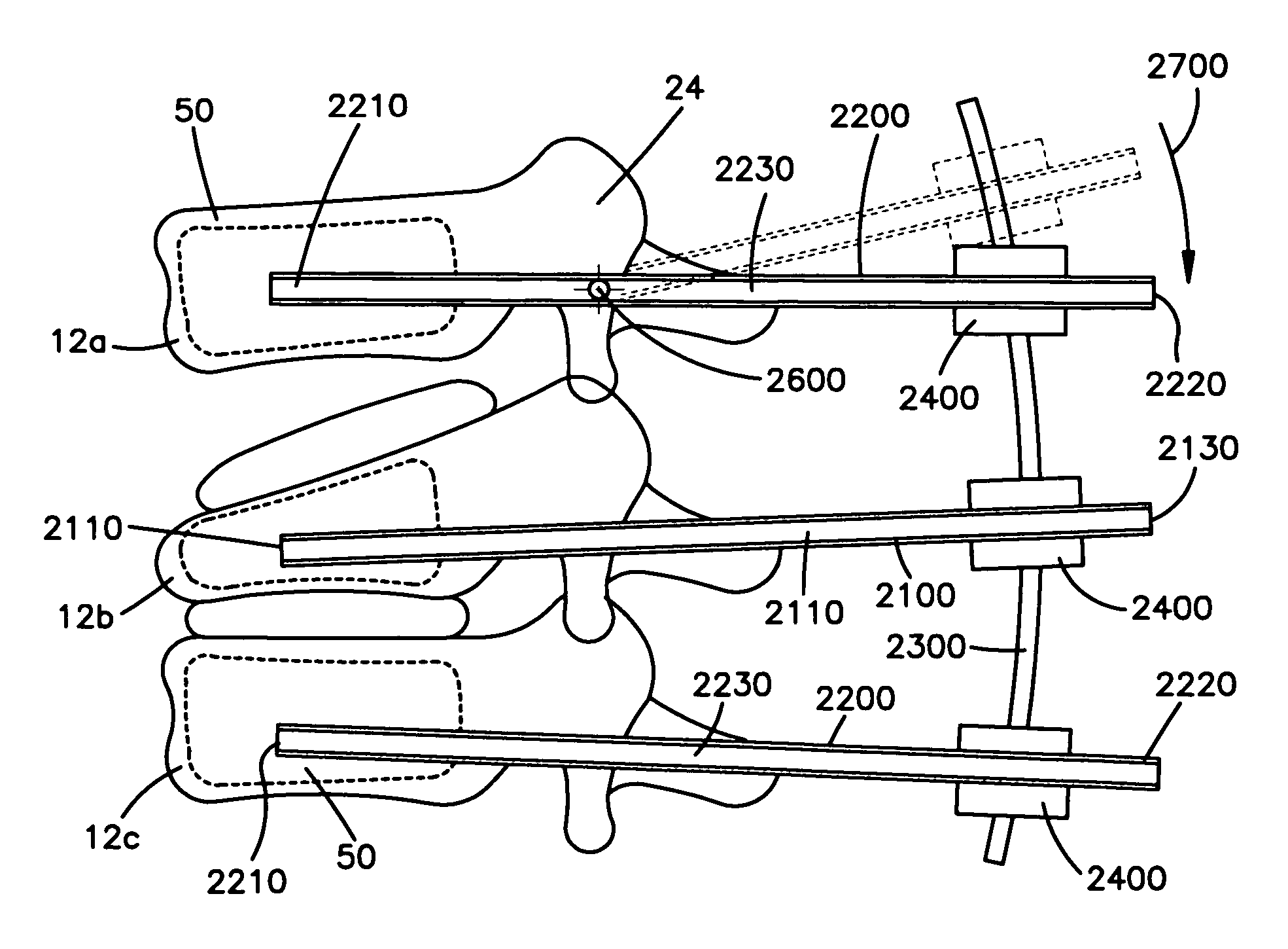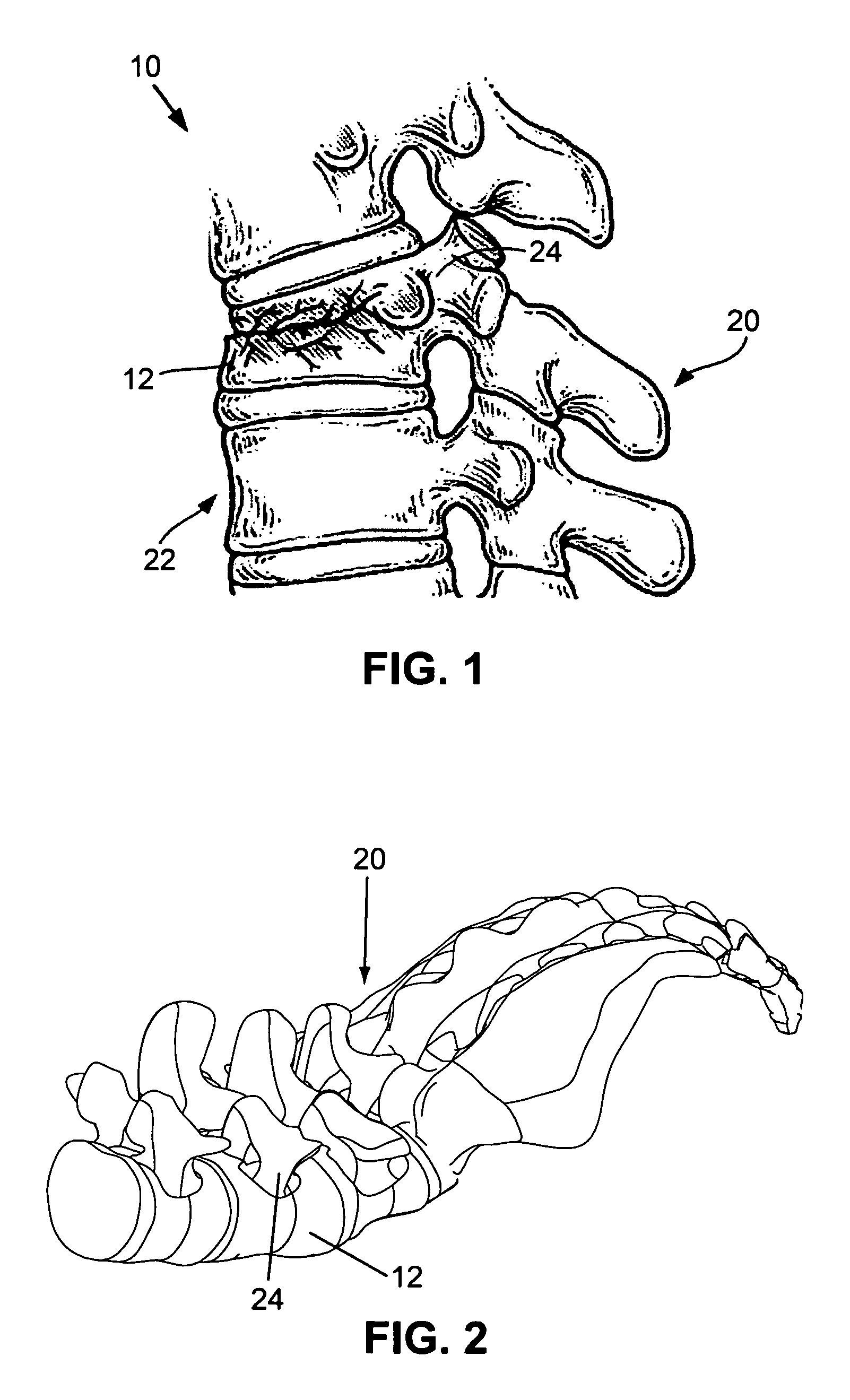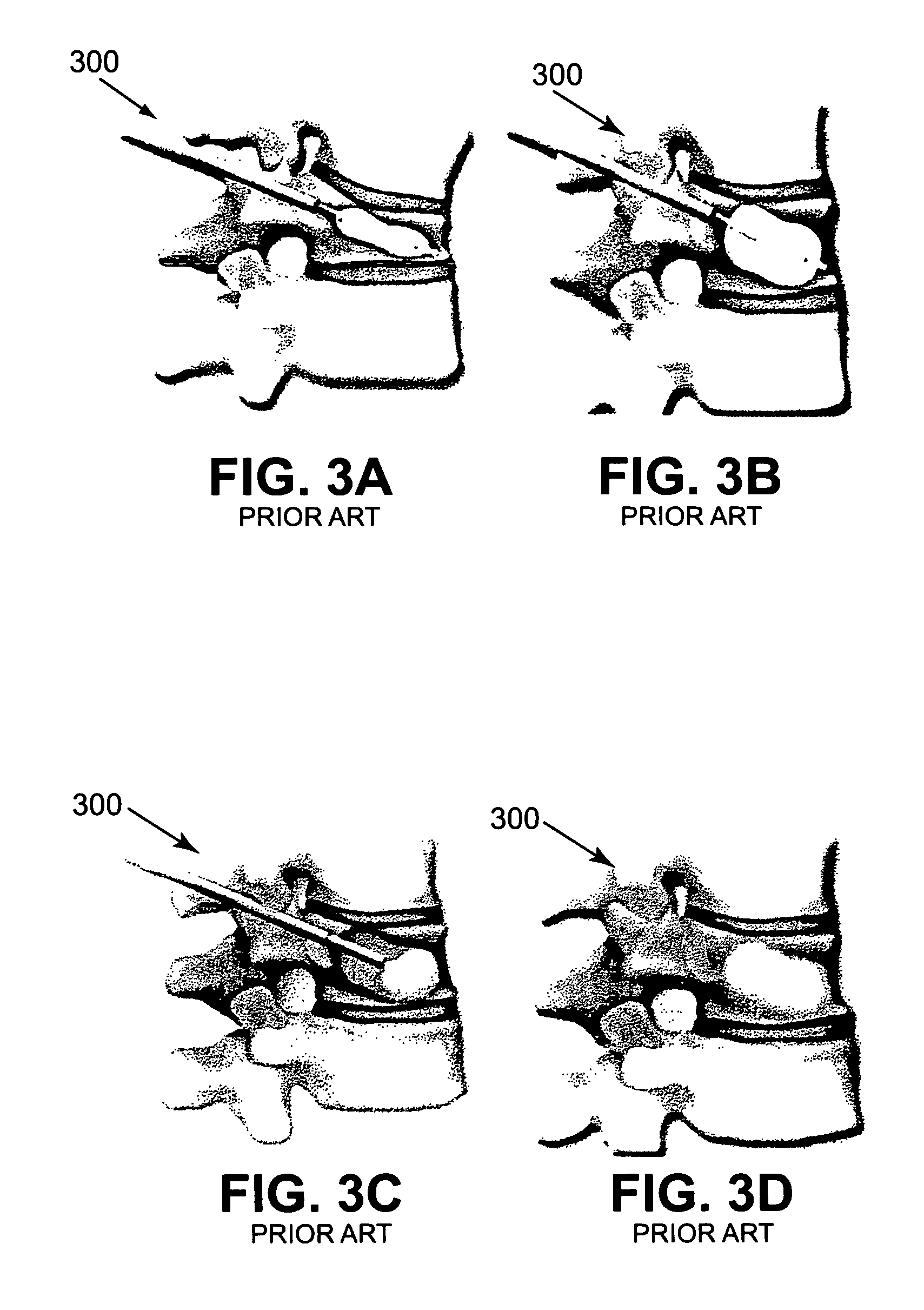Apparatus and methods for vertebral augmentation
a vertebral augmentation and minimally invasive technology, applied in the field of surgical implants, can solve the problems of prolonged disability, limited treatment options for compression fractures and related deformities, and repositioning fractured bones, so as to reduce compressive forces and the effect of advancing the vertebral body
- Summary
- Abstract
- Description
- Claims
- Application Information
AI Technical Summary
Benefits of technology
Problems solved by technology
Method used
Image
Examples
Embodiment Construction
[0084]A method 1000 of restoring spinal lordosis and augmenting a vertebral body, for example to treat a vertebral compression fracture will be described (see FIG. 4). In general, method 1000 may include one or more of the following steps: step 1100, inserting one or more cannulae into a damaged vertebral body and / or into vertebral bodies adjacent to the damaged vertebral body. Step 1100 may be performed from a posterior approach. Step 1200 involves repositioning the vertebrae using the cannulae. Step 1200 may be performed in conjunction with an external fixation device. Step 1300, disrupts fractured bone in the damaged vertebra. Step 1400, restores the vertebral body height; and step 1500 augments the restored vertebral body, for example using an implant or filler material. Some or all of the steps 1100, 1200, 1300, 1400 and / or 1500 of method 1000 may be performed in an order as shown in FIG. 4, or in any other order, and may be used in combination with other methods. Additional de...
PUM
 Login to View More
Login to View More Abstract
Description
Claims
Application Information
 Login to View More
Login to View More - R&D
- Intellectual Property
- Life Sciences
- Materials
- Tech Scout
- Unparalleled Data Quality
- Higher Quality Content
- 60% Fewer Hallucinations
Browse by: Latest US Patents, China's latest patents, Technical Efficacy Thesaurus, Application Domain, Technology Topic, Popular Technical Reports.
© 2025 PatSnap. All rights reserved.Legal|Privacy policy|Modern Slavery Act Transparency Statement|Sitemap|About US| Contact US: help@patsnap.com



